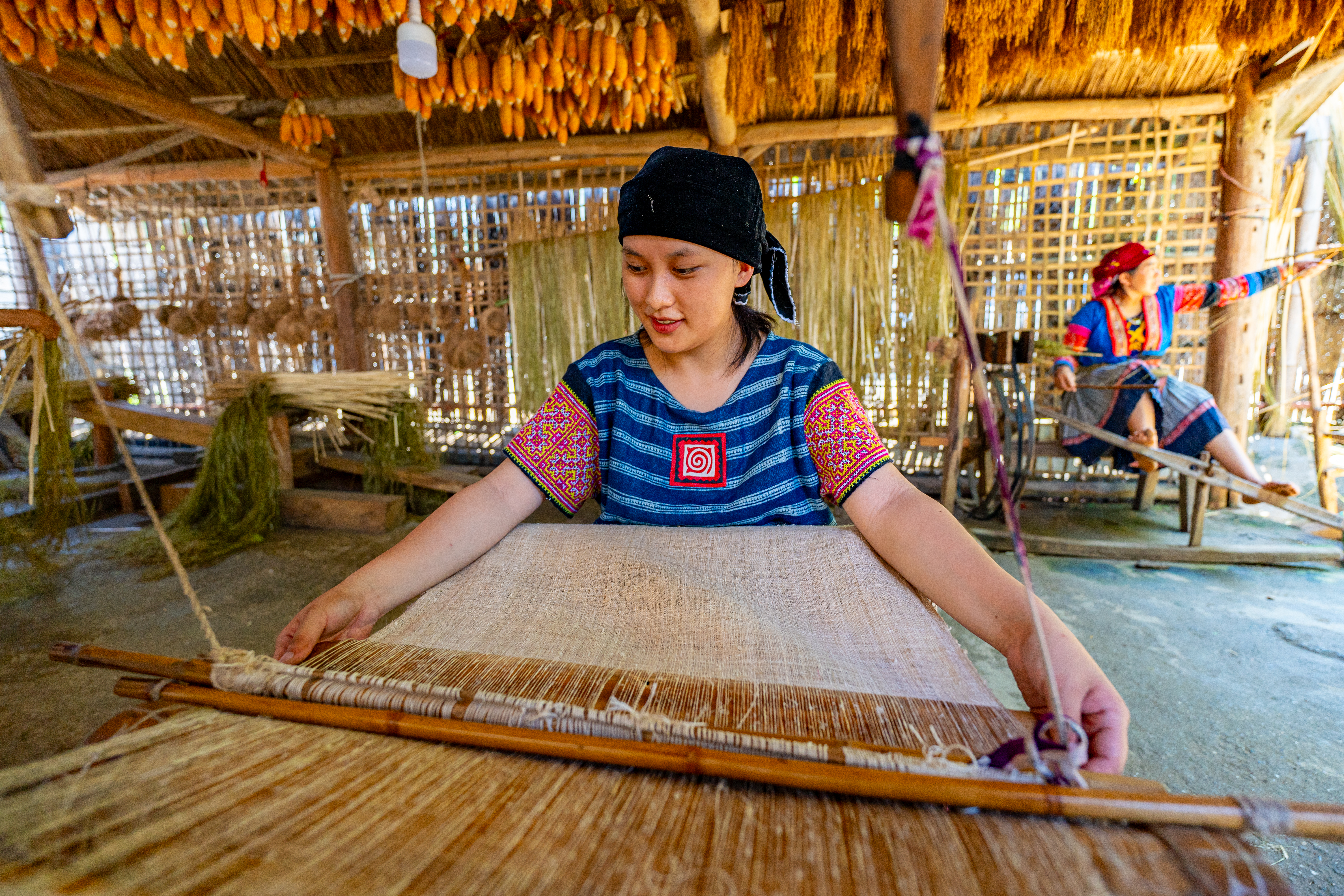Lung Tam is a long-standing home of the H'Mong ethnic group. The village is about 50 km from the center of Ha Giang city, nestled below the Quan Ba twin mountains. Visitors to Lung Tam brocade weaving village will admire the scene of people busy in their daily lives. In particular, the image of H'Mong women sitting in front of looms skillfully making beautiful fabrics or unique brocade products.

Lung Tam is a long-standing home of the H'Mong ethnic group.
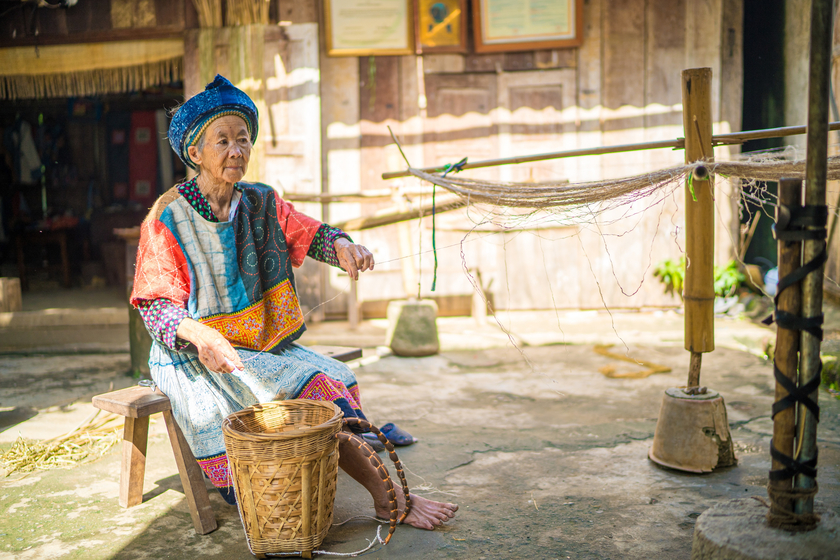
Linen weaving is an ancient craft that has been passed down through generations.
Having the opportunity to visit Lung Tam and learn about the linen weaving profession, Mr. Dong Nhat Huy (born in 1991, Vung Tau City) shared: "During a business trip to the Northwest with the HTV film crew to make a program about culture and cuisine, I was able to go to Lung Tam village, famous for its linen weaving profession, to introduce linen products to all domestic and international friends."
According to the locals, linen weaving is a long-standing craft that has been passed down through generations. This work not only helps increase income but also preserves the cultural identity of the nation. The main raw material is taken from flax plants grown by the people in the village or surrounding areas. When Hmong women reach adulthood, they also have their own fields to grow flax.
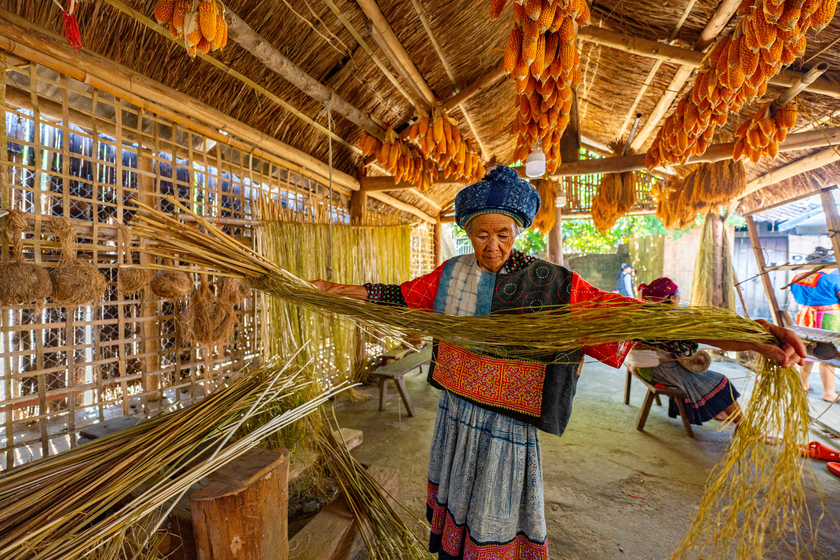
This job not only helps increase income but also preserves the cultural identity of the nation.
Highlights of the elaborate stages of linen weaving
During the trip, Mr. Nhat Huy had the opportunity to admire many stages of making linen fabric of the H'Mong people. First, the flax plant must be skillfully stripped of its bark. The bundles of flax bark are rolled tightly and then pounded in a mortar until all the powder is removed, leaving only tough fibers. The bundles of flax fibers are spun and rolled into large skeins.
After several times of boiling in ash water and once boiling in beeswax water, the flax fibers have become whiter and softer, and the Hmong women begin to sit at their looms. Spinning is done anytime and anywhere during their free time, so Hmong women or girls always carry flax fibers with them. To spin stronger fibers, the Hmong people create a tool that combines the rhythm of their feet and hands, allowing them to spin many flax fibers at once. The finished fabric must be washed many times to make it truly white.
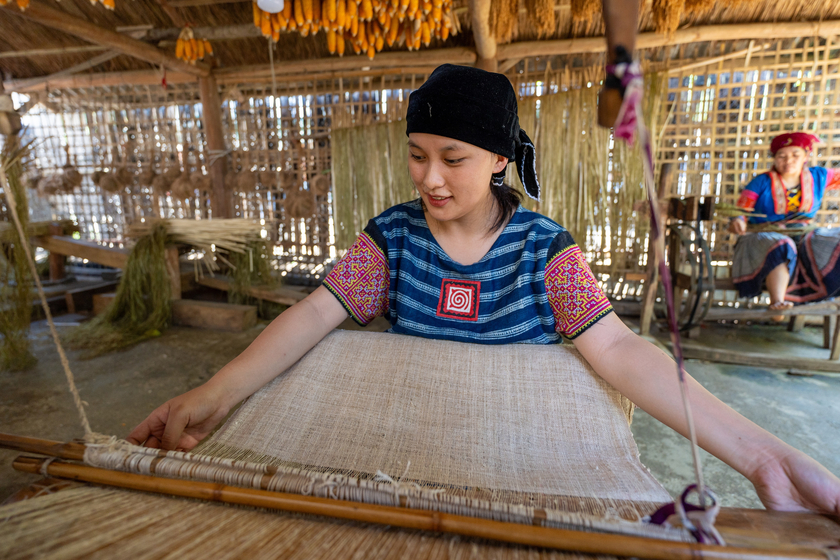
Image of H'Mong women sitting in front of looms skillfully making beautiful fabrics or unique brocade products.
After weaving, the linen fabric will be dyed. In addition to the main indigo color, the Hmong also dye other colors such as red, yellow, dark blue, etc. All dyes are extracted from forest leaves, without industrial chemicals.
According to Mr. Nhat Huy, one of the special things that makes the linen brocade brand of the H'Mong people in Lung Tam is the creation of patterns and motifs using the technique of embroidering colored fabric and painting unique beeswax patterns. The patterns on the products symbolize friendship or health. The H'Mong people created the use of beeswax to paint on white fabric in diamond or square shapes, symmetrical to help the patterns on the fabric last longer.
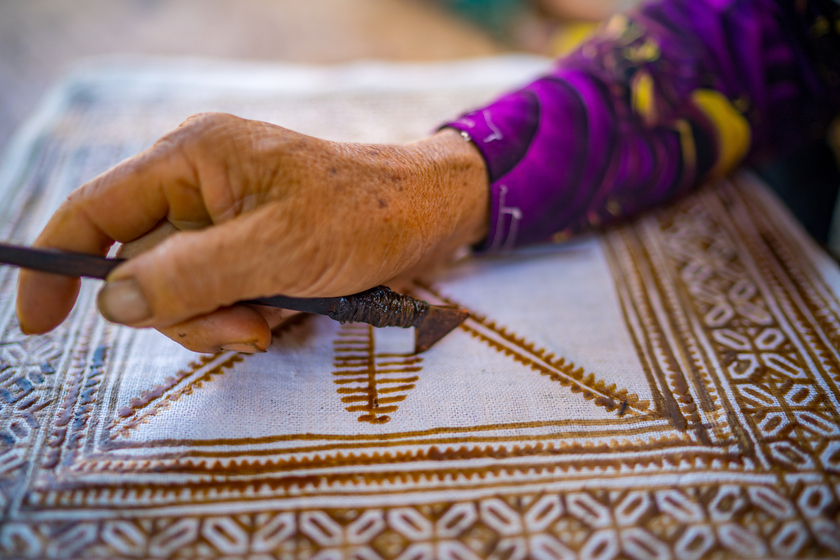
What makes the H'Mong people's linen brocade brand in Lung Tam special is the creation of patterns and motifs using the technique of embroidering colored fabric and painting unique beeswax patterns.
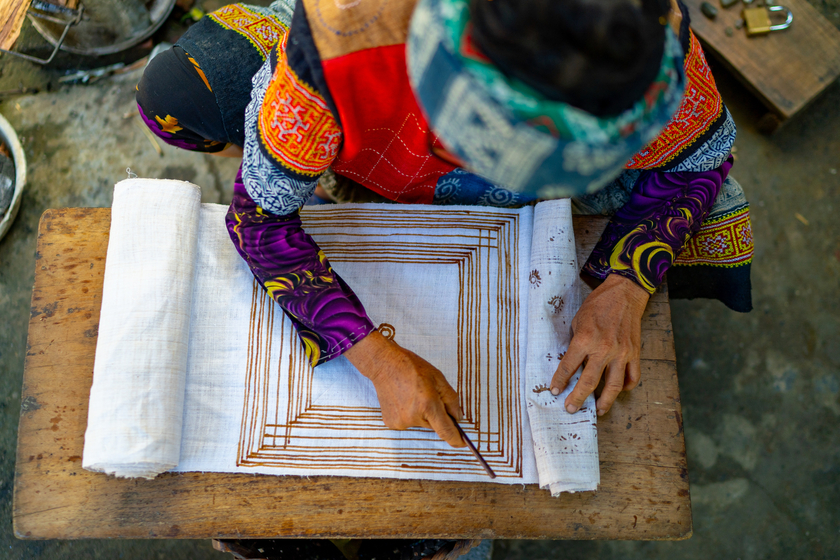
The H'Mong people invented the use of beeswax to draw on white cloth in diamond or square shapes, symmetrically, to help the patterns on the cloth last longer.
With the skillful hands of the H'Mong people, many products with diverse designs have been created such as pants, shirts, scarves, wallets, handbags, etc. Not only serving daily life, many products are also used in restaurants and hotels.
The Meaning Behind the Linen Weaving Craft
The Hmong people prefer to weave linen instead of cotton because they believe that linen fibers are more durable and stronger. In terms of spiritual beliefs, they believe that linen is the bridge between humans and the other world. According to the people here, when a person goes to the other world without a set of linen clothes, the whole village and family will not hold a funeral for them, the deceased will not find their way back to their ancestors and their ancestors will not be able to find their dead. The elderly also believe that linen fibers guide the deceased back to their ancestors and reincarnate as humans.

The Hmong people prefer to weave linen instead of cotton because they believe that linen fibers are more durable and stronger.
All Hmong women must know how to weave linen from a young age. Weaving linen shows diligence and skill, which are also criteria to evaluate a woman's good character. Only when she can sew a complete brocade outfit by herself, can she be considered an adult. Before getting married, a Hmong girl will have her mother weave a linen outfit for her. After moving to her husband's house, the daughter-in-law will give her mother-in-law a linen outfit that she made herself.






